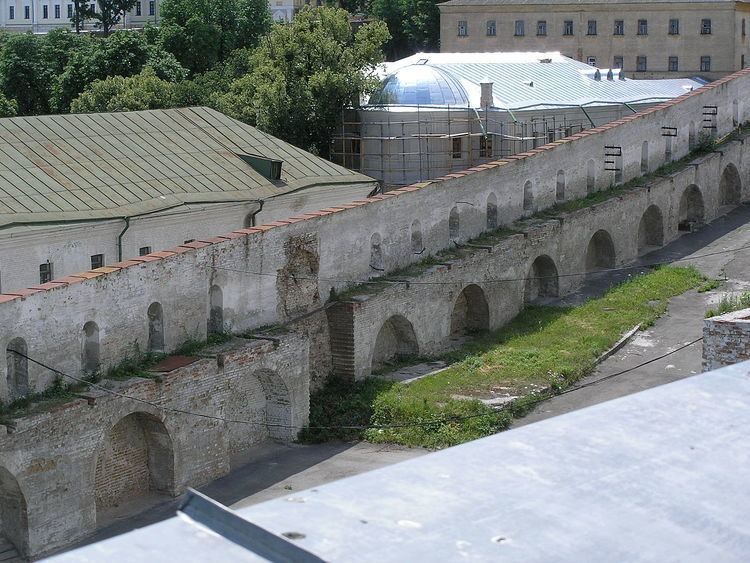 | ||
Similar All‑Saints Church, Gate Church of the Trinity, Refectory Church, Great Lavra Bell Tower, Church of the Saviour at Berest | ||
The Lavra fortification (Ukrainian: Лаврські фортифікаційні споруди, Lavrs’ki fortyfikatsiini sporudy; Russian: Лаврские фортификационные укрепления , Lavrskie fortifikatsionnye ukrepleniya) is a system of walls, towers and other constructions built for the protection of the Cave Monastery in Kiev, the capital of Ukraine.
Contents
History
The fortification around the monastery first arouse at the end of the 12th century, when a 2 metre wide leave, 5 metre high stone wall was erected. This wall was destroyed during the Mongol invasion of Rus and was finally excavated by archeologists in 1951. After the Mongol invasion, the monastery was defended by wooden walls. In 1679, Hetman Ivan Samoylovych had a moat and new ramparts added to the fortification around the "upper monastery."
Hetman Ivan Mazepa financed the fortification's construction at the height of the Great Northern War, and had a thick stone wall with four towers added for protection of the monastery in case of Swedish or Russian attack. The total length of the walls was 1,090 m (3,580 ft), thickness - 3 m (9.8 ft), and height - 7 m (23 ft). The fort had three gates, Holy gates with the Trinity Gate Church, Economy gates with the All Saints Church, and Southern gates or Caves gates. There were also four towers, Ivan Kushchnyk Tower, Onufriy Tower, Painter Tower, and Clock Tower.
In 1706, Tsar Peter I ordered the construction of the so-called "Old Cave Fortress." The earliest plans for the fortress were done by engineer named Gellert. It was completed in 1723, and consisted of a semicircular citadel with a 6 metre high earthen rampart, eight bulwarks, and other fortifications. The new fortress had an arsenal of 467 artillery guns, 27 mortars, and 3 howitzers.
During the 18th and 19th centuries, the fortress was rebuilt again, particularly around the near and far caves. The new project was created by Otto von Freiman and carried out by Lieutenant Colonel Burman. The new walls were 1,039 m (3,409 ft) in length, three and half brick thick and 4 m (13 ft) high with a brick fundament 1.5 m (4.9 ft) deep. During that time, the Old Cave Fortress constructed in the 18th century was the base for the administrative and military institutions of the Russian Empire in the city.
Constructions
The fortification consisted of a total of four towers:
Near the North Tower, there is a water tower, which is not part of the Lavra fortification system. It was designed by the architect V. Sychugov and constructed to ensure the Lavra's fresh water supply in 1879.
